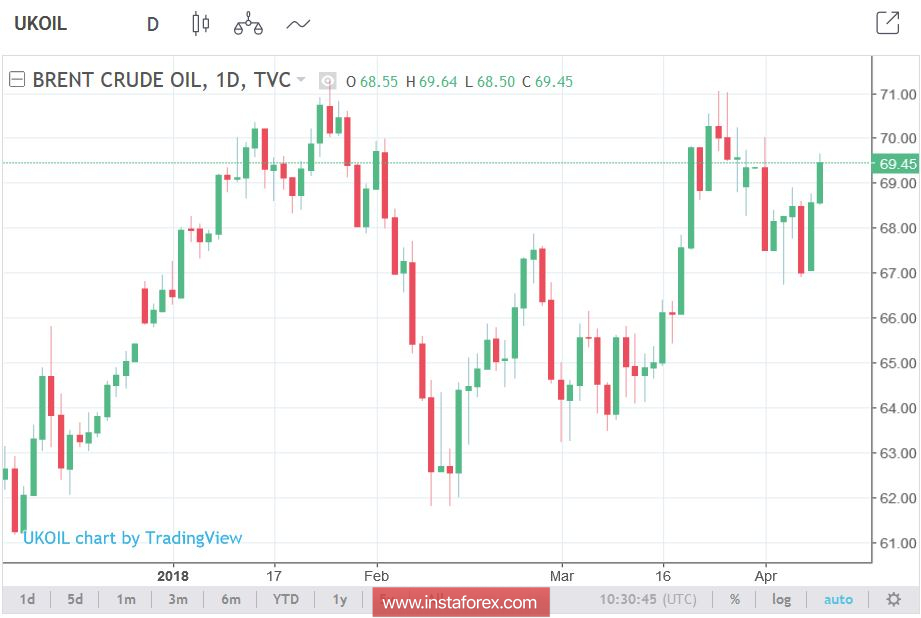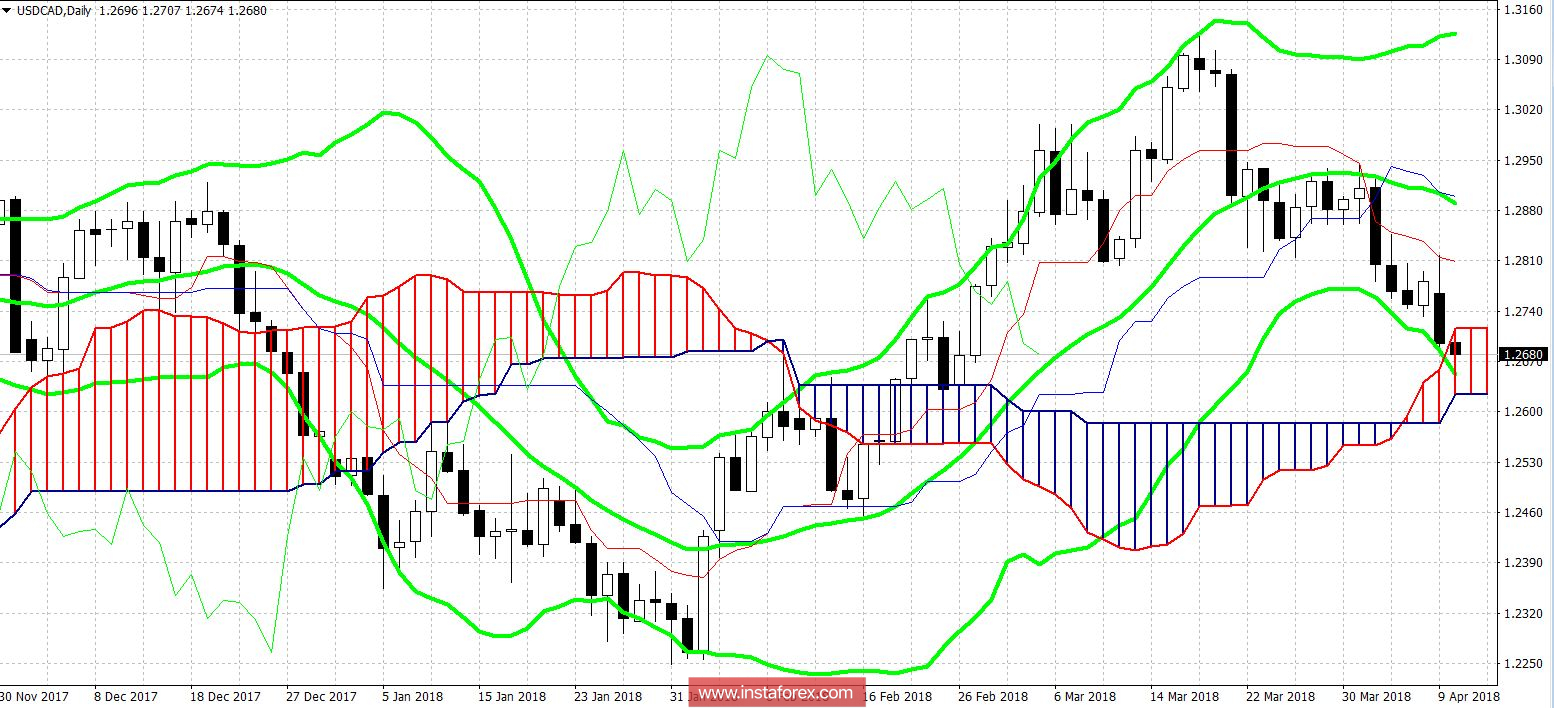Oil was able to overcome temporary difficulties and again returned to the area of the 70th figure. The market once again was under the power of geopolitics. Negative statistics reporting on the increase in the number of drilling rigs in the US, fell into the background. In addition, oil traders expect a decline in oil reserves in US stores (the release is scheduled for tomorrow). This fact will provide additional support for quotations. The main beneficiary of this situation is the Canadian dollar.
However, the growth of the oil market is an important factor contributing to the strengthening of the "loonie". On Friday, data were published on the Canadian labor market, which remained in the shadow of the American Non Farms. Although Canadian indicators showed a positive trend, the unemployment rate remained at a record low of 5.8%, but the number of employees unexpectedly jumped to 32 thousand, continuing the positive trend last month.
This release has brightened the negative of the previously published indicator of the country's GDP. The indicator was in the "red zone" for the first time since August last year, the indicator in monthly terms dropped into the negative area (-0.1% m / m), and in annual terms, it showed the worst result since February 2017. First of all, he led the mining sector, as well as the real estate sector. The Canadian housing market is getting cheaper for the fourth month in a row due to an increase in the interest rate and the introduction of new mortgage lending rules. The result was not long in coming, in seven of the eleven largest cities in the country, property prices in February continued to decline. In Toronto alone, sales fell by almost 40%, setting a 9-year anti-record.
However, according to the estimates of specialized specialists, these problems are temporary. The real estate market should stabilize by the summer period, and the mining sector will receive support from the oil market. The remaining components of GDP showed at least a minimum, but still growth. For example, the index PPI in February rose by 0.1%, and in annual terms, the producer price index increased by 1.9%. The turnover of wholesale trade has also recovered after a significant decline.
Substantial support for the Canadian currency is provided by the oil market. In early April, quotes were under pressure due to the imminent trade war between China and the United States. A certain pessimism was caused by the renewed growth in the number of drilling rigs in the States. However, the fundamental picture changed quickly enough. China's leader Xi Jinping yesterday sounded a fairly peace-loving tone for the Americans, saying that it does not support the idea of a cold war.

The market of "black gold", as well as commodity currencies (except for the ruble), immediately reacted to this rhetoric. The likelihood of a "world transaction", which also spoke of Donald Trump, has grown significantly. Brent rose to the middle of the 69th figure, and WTI - to $ 64.2. This trend may continue if tomorrow's data on crude oil and petroleum products in the US come at the level of forecasts. According to experts, this indicator will again be in the negative zone, showing a decrease of 1.4 million barrels. As noted by analysts, this dynamics is not typical for this time of the year, especially as the production of "black gold" in the States grows. Therefore, if tomorrow's release comes at least at the forecast level, oil quotes will receive additional support, like the Canadian dollar.
In general, the growth of inflation and the labor market against the background of the stabilization of the oil market indicate that the Bank of Canada will continue to raise the rate this year. According to some currency strategists, the Canadian regulator will return to this issue three times - in April, in the autumn and at the end of the year. The first target level - 2% - can be reached already in December.
This scenario has all the chances for implementation, especially if the US, Canada and Mexico will re-engage the North American Free Trade Agreement. Recently, the sides once again announced progress in the negotiations ahead of the Peru summit, which will be held on April 13-15. By this date, the negotiators should come to a common denominator on the main issues, and the deal is planned to be re-started tentatively until July 1. If the plans sounded take on real shape, the Bank of Canada will receive an additional argument for further tightening of monetary policy.

Thus, the Canadian dollar now clearly dominates in tandem with the American namesake. In the long term, the pair USD / CAD may drop to the 22nd figure, for this pair it is necessary to gain a foothold below the level of 1.2620. In this case, the Ichimoku Kinko Hyo indicator on the weekly chart will form a bearish "Line Parade" signal, and the price will be between the middle and lower lines of the Bollinger Bands indicator. Considering the medium-term trade, we can say that the southern dynamics is also in priority. If tomorrow's data on oil reserves in the US come at a predictable level, the pair may fall to the bottom of the 26th figure, confirming a downtrend.





















